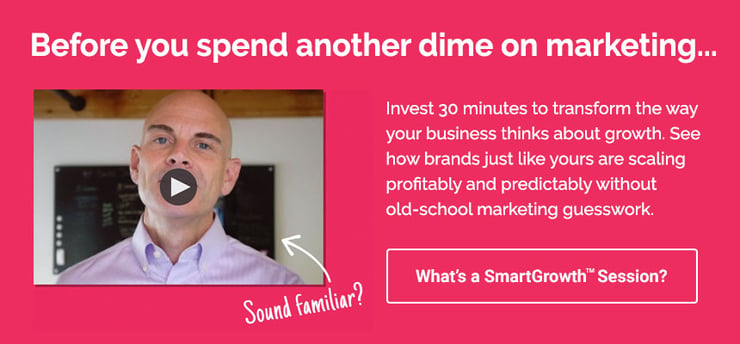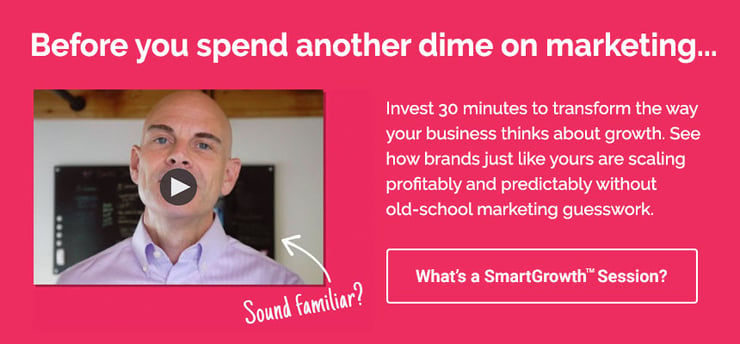Ever feel like you're shouting into the void with your marketing efforts? You're not alone. Many B2B founders and CEOs are stuck in the old outbound playbook, chasing leads like it’s 1999. But what if I told you there's a way to make customers come to you? Welcome to the world of B2B inbound marketing, where your audience becomes your biggest fan and leads practically beg to work with you.
In this article, we'll dive into 11 powerful B2B inbound marketing strategies that have changed how modern companies attract and retain clients. From content marketing that turns your brand into a thought leader, to interactive tools that prospects can't resist, we've got the inside scoop on what's working right now. Ready to turn your marketing from a megaphone into a magnet? Let's explore how top brands are crushing it with these inbound tactics, and how you can too.
11 Powerful B2B Inbound Marketing Strategies
1. Content Marketing: The Cornerstone of B2B Inbound Success
Ever wondered how some B2B companies seem to have an endless stream of valuable information at their fingertips? Enter HubSpot, the poster child of B2B inbound marketing through content. Their strategy isn't just about churning out blog posts; it's about creating a diverse ecosystem of content that addresses every stage of the buyer's journey.
HubSpot's approach includes:
- In-depth blog articles that tackle common industry pain points
- Free tools and templates that provide immediate value to prospects
- Lead magnets including comprehensive guides and ebooks that position them as thought leaders
But how do you measure the ROI of all this content? HubSpot tracks not just traffic and leads, but also how content influences deal close rates and customer retention. It's not just about views; it's about value.
2. SEO: Climbing the B2B Search Rankings
Picture this: Your ideal customer types a query into Google, and there you are, right at the top. That's the power of B2B SEO, and Lucidchart has mastered it. Their strategy goes beyond just keyword stuffing (a tactic as outdated as dial-up internet).
Lucidchart's SEO playbook includes:
- Creating content clusters around high-value keywords
- Optimizing for featured snippets to dominate search real estate
- Building a robust backlink profile through strategic partnerships
Remember, B2B SEO isn't just about ranking; it's about ranking for the right keywords that attract decision-makers, not just tire-kickers.
3. Email Marketing: Nurturing B2B Relationships in the Inbox
In a world of overflowing inboxes, how does Salesforce manage to cut through the clutter? Their email marketing strategy is a masterclass in B2B inbound marketing. It's not about blasting out generic newsletters; it's about delivering personalized value directly to prospects' inboxes.
Salesforce's email strategy includes:
- Segmented campaigns based on industry, role, and behavior
- Dynamic content that adapts to the recipient's interests
- Automated nurture sequences that guide leads through the funnel
The result? Emails that feel less like corporate spam and more like a conversation with a knowledgeable colleague.
4. Social Media Marketing: Engaging B2B Audiences Where They Scroll
Think B2B social media is all stuffy corporate updates? Think again. LinkedIn has revolutionized how B2B brands engage on social platforms. They've turned their own platform into a content powerhouse, showing other B2B companies how it's done.
LinkedIn's social strategy includes:
- Thought leadership articles from company executives
- Behind-the-scenes content that humanizes the brand
- Interactive polls and questions that spark meaningful conversations
The key takeaway? B2B social media isn't about selling; it's about building relationships and establishing authority in your space.
5. Virtual Events: The New Frontier of B2B Inbound Marketing
Remember when networking meant squeezing into a crowded conference hall? Airmeet has flipped that script, using virtual events as a cornerstone of their B2B inbound marketing strategy. They're not just selling a platform; they're showcasing its potential in real time.
Airmeet's virtual event strategy includes:
- Regular webinars that tackle hot industry topics
- Virtual product demos that double as networking events
- Interactive workshops that provide hands-on value to attendees
The best part? Every attendee becomes a warm lead, primed for follow-up.
6. Account-Based Marketing (ABM): Precision Targeting in B2B
Imagine if you could tailor your entire marketing strategy to a handful of dream clients. That's the promise of account-based marketing, and Demandbase is leading the charge. They're not just selling ABM software; they're living it.
Demandbase's ABM approach includes:
- Personalized website experiences for target accounts
- Customized content journeys for key decision-makers
- Multi-channel campaigns that surround accounts with consistent messaging
It's like having a sniper rifle in a world of shotgun marketing approaches.
7. Video Marketing: Visualizing Success in B2B Inbound
How do you explain complex B2B solutions without putting your audience to sleep? Cisco has cracked the code with video marketing. They've turned potentially dry topics into engaging visual stories.
Cisco's video strategy includes:
- Short explainer videos that break down complex concepts
- Customer success stories that showcase real-world applications
- Live Q&A sessions with product experts
The result? Content that's not just watched, but remembered and shared.
8. Conversational Marketing: Real-Time Engagement for B2B Leads
In the age of instant gratification, why make B2B buyers wait? Drift has pioneered the use of chatbots and live chat to engage prospects in real-time. It's like having your best sales rep available 24/7.
Drift's conversational marketing approach includes:
- AI-powered chatbots that qualify leads on the spot
- Seamless handoffs to human reps for complex queries
- Personalized conversation flows based on visitor behavior
It's not just about being responsive; it's about being proactively helpful.
9. Podcasting: Audio Content for B2B Thought Leadership
Who says B2B content has to be visual? Accenture's "Built for Change" podcast proves that audio can be a powerful tool in your B2B inbound marketing arsenal. It's like having a direct line to the thoughts of industry leaders.
Accenture's podcast strategy includes:
- Interviews with top executives and innovators
- Deep dives into emerging industry trends
- B2B storytelling that brings complex business concepts to life
The beauty of podcasts? They turn dead time (like commutes) into learning opportunities for your audience.
10. Interactive Content: Engaging B2B Prospects Through Participation
Why tell when you can show? Better yet, why not let prospects experience your value firsthand? OptinMonster has mastered the art of interactive content in B2B inbound marketing.
OptinMonster's interactive approach includes:
- ROI calculators that quantify the value of their solution
- Assessments that help prospects identify their marketing gaps
- Interactive demos that let users test drive features
It's not just content consumption; it's content interaction.
11. Influencer Marketing: Leveraging Industry Voices in B2B
Think influencer marketing is just for B2C brands? Adobe's Insiders program proves otherwise. They've tapped into the power of industry experts to amplify their B2B inbound marketing efforts.
Adobe's B2B influencer strategy includes:
- Collaborative content creation with industry thought leaders
- Insider-led workshops and training sessions
- Influencer takeovers of Adobe's social media channels
The result? Content that carries the weight of external expertise, not just brand messaging.
By implementing these B2B inbound marketing strategies, you're not just keeping up with the competition; you're positioning your brand as a leader in your industry. Remember, the goal isn't to shout louder than everyone else; it's to speak so compellingly that your audience can't help but listen. The 11 B2B inbound marketing strategies we've explored are your ticket to becoming the magnet that attracts high-quality leads and turns them into loyal customers.
From HubSpot's content marketing mastery to Adobe's innovative influencer program, we've seen how industry leaders are leveraging these tactics to great effect. The key takeaway? B2B inbound marketing isn't just about attracting attention—it's about providing value at every stage of the buyer's journey.
How to Get Started with B2B Inbound Marketing
Whether you're excited to dive into interactive content like OptinMonster or ready to launch your own industry-leading podcast à la Accenture, the power of inbound is clear. It's not about shouting louder; it's about speaking directly to your audience's needs and challenges.
Ready to transform your B2B marketing from outbound interruption to inbound attraction? Don't let this knowledge sit idle. Take the next step in your inbound marketing journey with Brand Theory's free B2B Marketing Playbook. It's a step-by-step guide to implementing these inbound tactics in your business.
Grab our playbook now and start turning your marketing into a lead-generating machine. Your future customers are out there, searching for solutions—make sure they find you first.





.png)
.png)
.png)